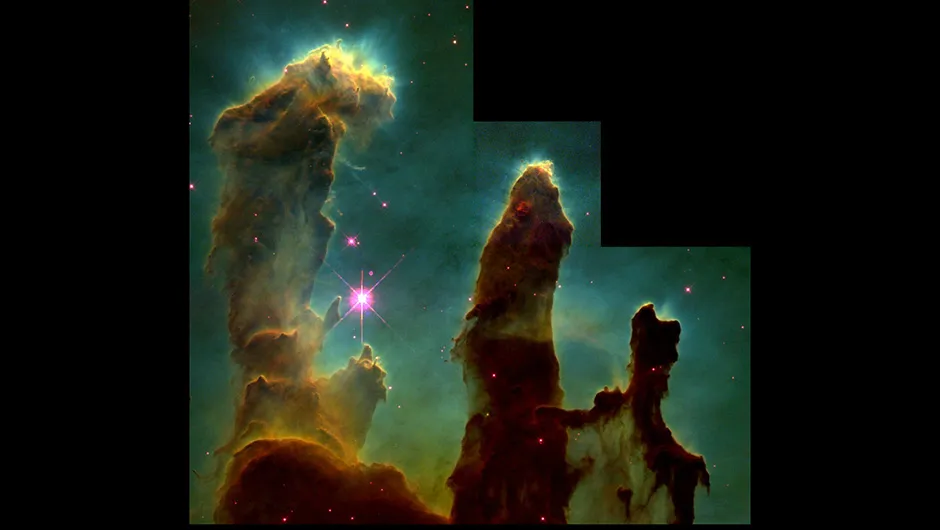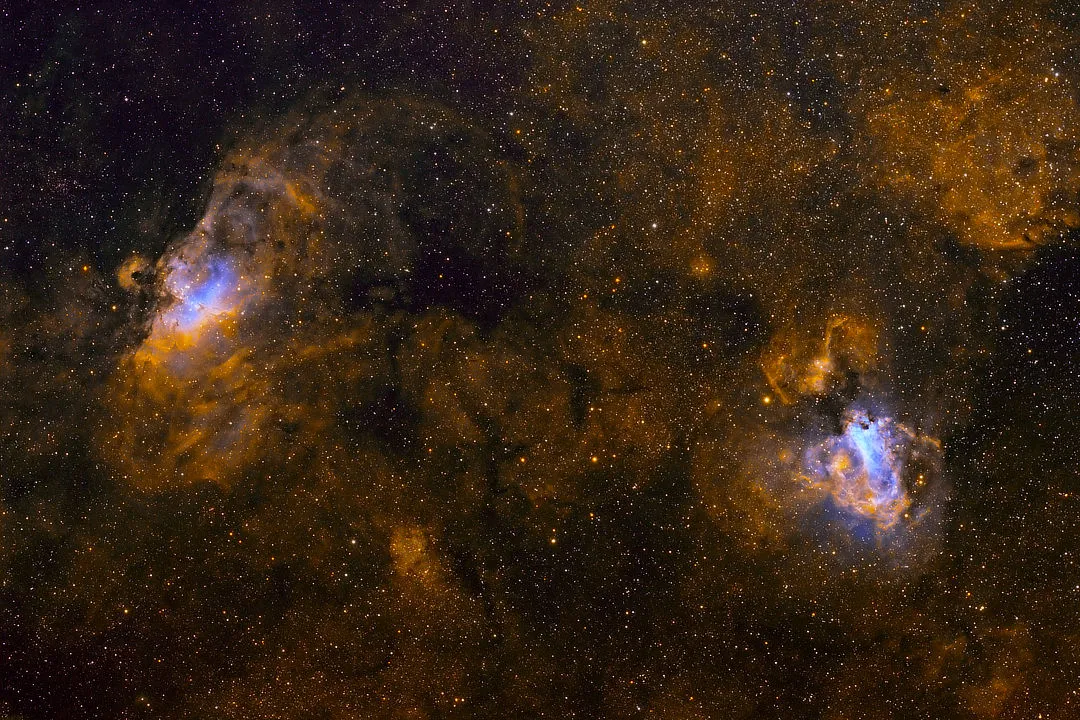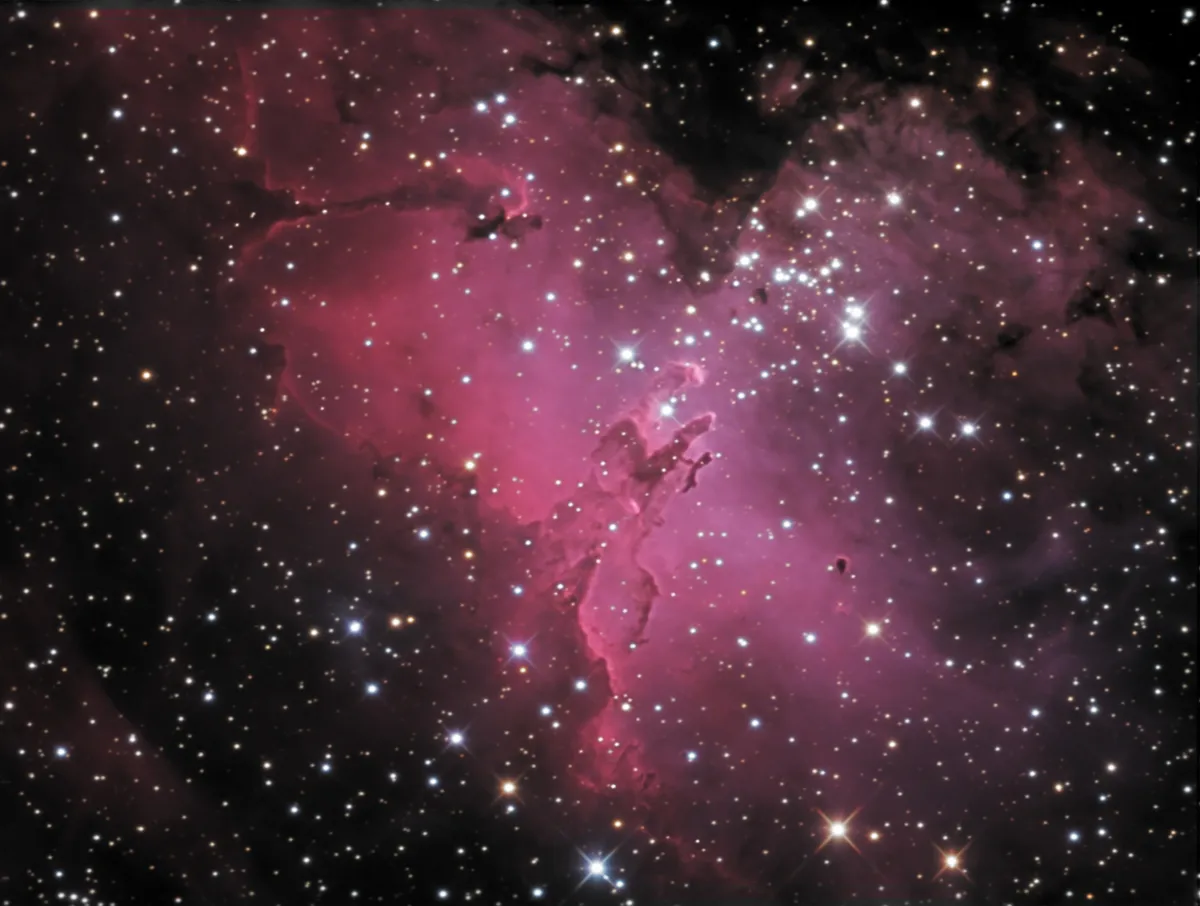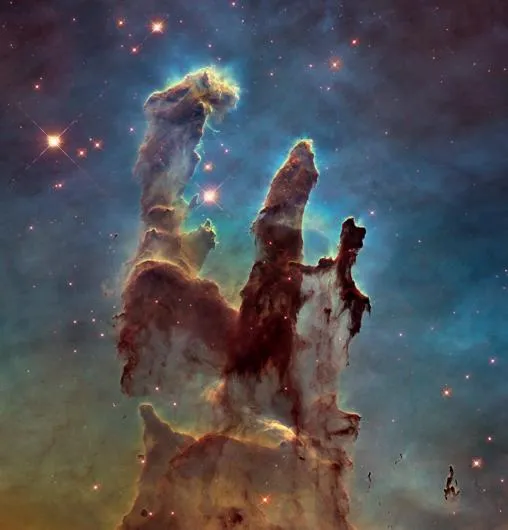The Eagle Nebula, Messier 16, is a nebula with embedded open cluster in the constellation of Serpens Cauda, and is famous because it contains the columns of gas known as the Pillars of Creation.
Most well-known is probably the Hubble Space Telescope image of the Pillars of Creation, and more recently the Webb Telescope has captured the Pillars of Creation too.

Observing the Pillars of Creation
A good challenge is to observe the Eagle Nebula and see if you can pick out the Pillars of Creation.
Turn a telescope on M16 though and, unless you’re using a large-aperture scope, you might come to the conclusion that the Eagle has flown.
The cluster is fairly easy to find 2.6° west and a degree north of mag. +4.7 Gamma (γ) Scuti.
Alternatively, locate it by looking 2.4° to the north of the bright and easily visible nebulosity of M17, the Omega Nebula (or Lobster or Swan, or whatever you want to call it).

While M17 is a stunning nebula, M16’s glowing gas is hardly visible. To see it you’ll need at least 127mm of aperture, a dark sky and a clear night.
Locate the cluster stars and make sure that you have properly dark-adapted eyes before making your attempt.
The use of averted vision, where you look slightly to the side of a faint object in order to place its dim light on a more sensitive part of your retina, will be very useful here.
The use of an OIII or UHC filter will greatly help too. Larger apertures will bring in more light, but light pollution will remove any advantage.

Photographing the Pillars of Creation
If you fail to spot the Eagle Nebula visually, a photograph of the region may fare better.
When the nebulosity is recorded photographically, there are two ‘eagles’ to recognise.
The first is supposed to be within the shape formed by the main areas of nebulosity, something which those with good imaginations have described as appearing like a top or bottom view of an eagle with its wings spread in flight.
The second is at the core of the nebula where the elongated columns of glowing gas, which were beautifully imaged by Hubble, appear like the profile of an eagle in flight with a fish in its claws.

Imagination is again required here, but when you see the profile, it does stand out quite well.
Visually, the Pillars of Creation require a minimum of 250mm aperture and high magnification. Even at this size, they are a tough spot though.
If you have a large-aperture scope, it’s an extraordinary experience to just stare at M16 and allow your visual system to start picking out the detail present.
See whether you can spot the shape of the eagle in profile. If you can, then you’re visually looking at the Pillars of Creation, which is rather cool!
This guide appeared in the July 2024 issue of BBC Sky at Night Magazine.
If you manage to observe or photograph the Pillars of Creation, let us know by emailing contactus@skyatnightmagazine.com.

